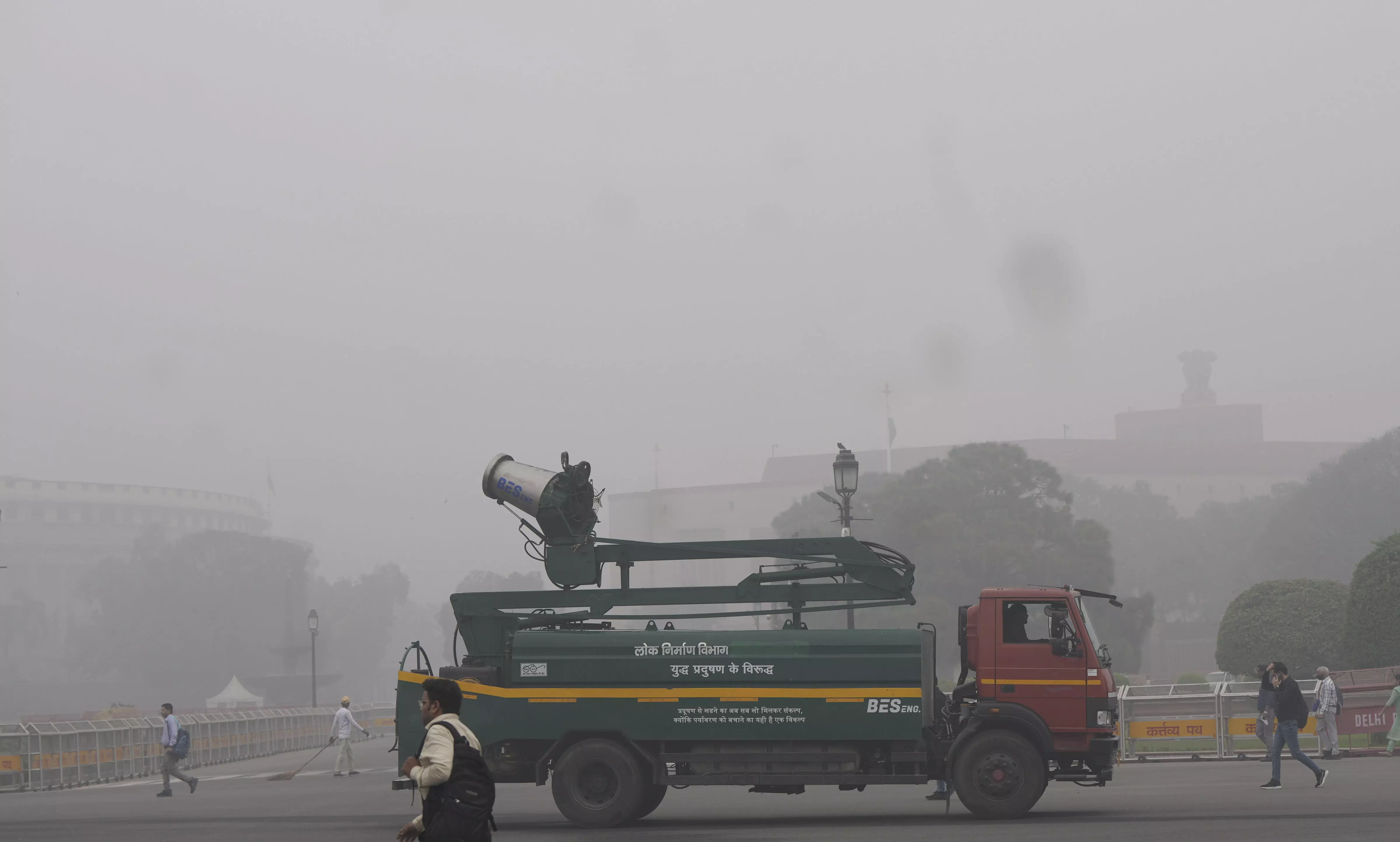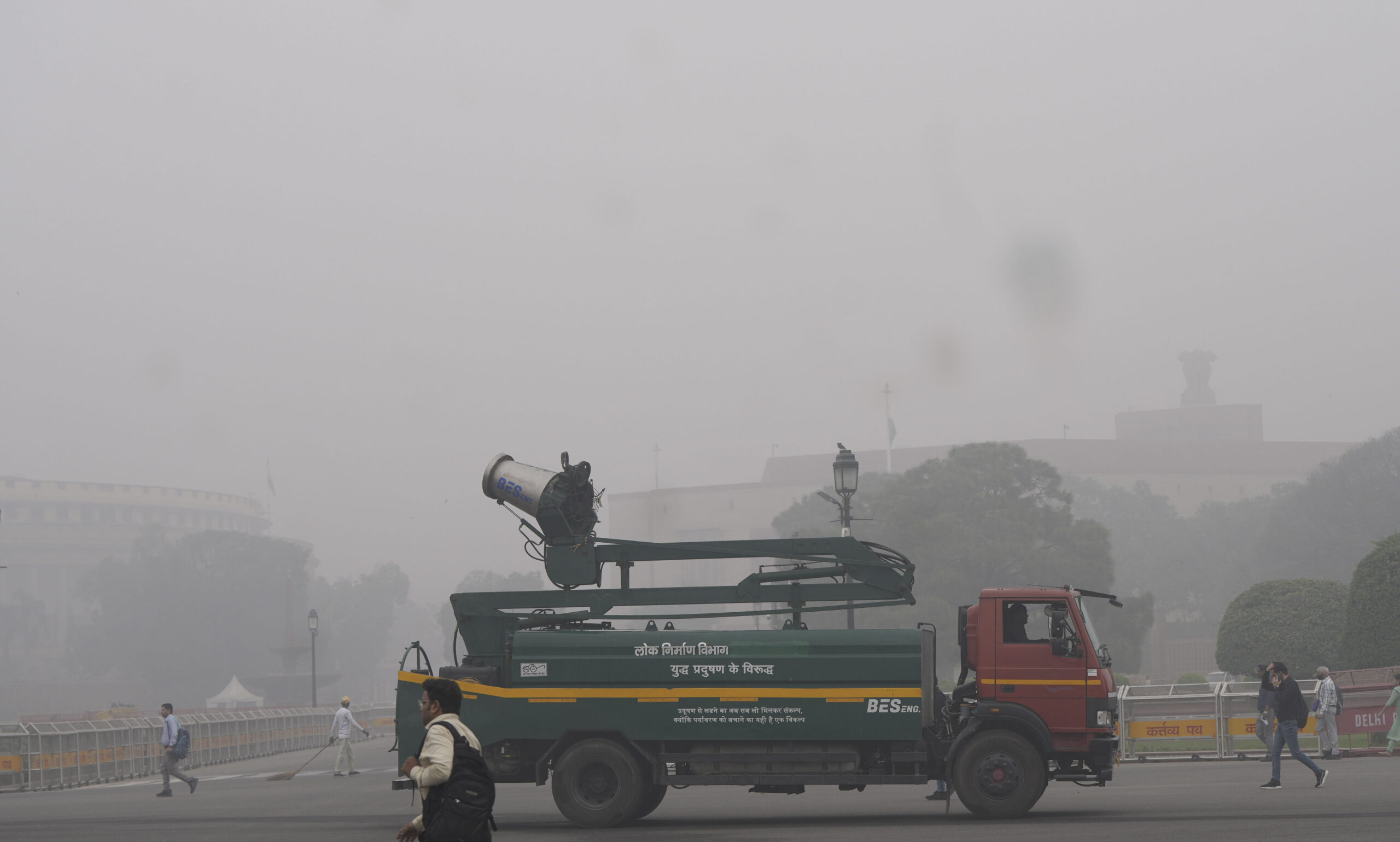
India aspires to become a $5 trillion economy, the third largest in the world, in the next five years. But that dream, constantly referenced by the country’s political leadership, depends on many “ifs” and “buts”. One key issue is the health of its people. Dirty air, currently a top headline-grabber in Delhi and across the National Capital Region (NCR), can potentially dent India’s aspirations.
The health impacts of toxic air are quite widely known. But that is only part of the story. Linked to it is the high economic cost. Exposure to air pollution is linked to one in eight deaths worldwide, according to “The State of the Global Air 2024”. Air pollution now ranks as the second leading risk factor for death, accounting for 8.1 million deaths globally. According to estimates by the World Health Organisation, in 2019, some 68 per cent of outdoor air pollution related premature deaths were due to ischaemic heart disease and stroke, 14 per cent were due to chronic obstructive pulmonary disease, 14 per cent were due to acute lower respiratory infections, and four per cent of deaths were due to lung cancers.
Some argue that poor air quality is the price India must pay for rapid economic growth. There is mounting evidence to the contrary.
“Conventional wisdom”, says a 2021 report, “considers air-pollution an unavoidable by-product of economic growth, thus limiting the intensity of response to it. In existing literature and publications, GDP per capita and growth rate are often linked to emissions levels, one predicting the other. This has framed an understanding, with many businesses, that growth and good air-quality are always in conflict, which has led to an entrenched perception of environmental regulations as being a cost that holds back companies”.
But “air pollution costs Indian businesses Rs 7 lakh crores ($95 billion) every year — 40 per cent of the cost of tackling the Covid-19 pandemic. This is equivalent to three per cent of India’s GDP. While this cost may have gone unnoticed thus far, it is high and persistent,” says the report commissioned by the Clean Air Fund and developed in partnership with Dalberg Advisors, Blue Sky Analytics and the Confederation of Indian Industry.
The cost of air pollution manifests in six ways: lower labour productivity, lower consumer footfall, premature mortality, lower asset productivity, increased health expenses and welfare losses, the report notes. Out of these, employee productivity, consumer footfall and premature mortality impact businesses directly. Air pollution resulted in 1.3 billion working days lost, costing $6 billion in India in 2019 due to absenteeism.
As air pollution soars, employees can get sick or opt to stay at home to take care of their children and the elderly, who are more vulnerable to air pollution: 98 per cent of this cost is borne by India’s northern and eastern part, where AQI levels cross 300-plus frequently, says the report. An Indian IT firm in Delhi loses 33 per cent of its competitive advantage over a Filipino company due to air pollution.
In South Delhi’s Govindpuri, a top cloth store owner told me the number of customers had nosedived in the past week. “Not too many people want to step out of home unless absolutely necessary,” he said.
Work-from-home, stay-at-home, and air purifiers, however, are temporary solutions for the relatively privileged. The vast majority of Indians work don’t have the luxury of staying confined to air-purified settings. With the Indian population’s median age rising, its susceptibility to air pollution will increase, raising the question of a sub-optimal workforce.
Delhi grabs headlines, but this isn’t Delhi’s problem alone. Several towns in northern India are suffering from dirty air. In recent days, Bahadurgarh in Haryana had the worst air quality.
Air pollution is also not confined to just the cold season. It is a year-long problem in Delhi, due to multiple reasons. About 40 per cent of Delhi’s air pollution is due to vehicular emissions, diesel vehicles being a key contributor. Industries around Delhi, especially in Ghaziabad, Noida, and Faridabad, are also part of the problem: they release pollutants like sulphur dioxide (SO2). Pollution control measures remain poor. Burning of rice stubble in neighbouring states like Haryana and Punjab simply makes things worse.
Add to that another critical factor: public apathy. How else do you explain people voluntarily adding more toxicity to an already toxic air by burning firecrackers every other night? The police do precious little despite the Supreme Court directives. Clean air is still not a top electoral issue. India’s political class is unwilling to take tough measures against special interest groups which contribute to dirty air because it knows it will get away.
A decade ago, Delhi and Beijing competed in the toxic air stakes. Both grappled with devastating health and economic impacts. Now, Delhi’s rival is Lahore, when it comes to polluted air. Beijing has cleaned up its act significantly. One key factor which led to Beijing’s transformation is its transport policy. Highly polluting cars are off the roads; the focus is on sustainable public transport. Experts note Beijing tightened emissions standards for vehicles and power plants, and actively coordinated air pollution control measures with surrounding areas, such as the Beijing-Tianjin-Hebei region. Collaborative planning, unified standards, joint emergency responses and information sharing significantly improved the air quality in this broader region.
India must promote mass transport as well as walking and cycling. It will not happen overnight. It requires hard infrastructure like more buses, better pavements as well as safety. Women should be able to walk back from the bus stop or Metro station without fear. Alongside, we need clean fuels, strict enforcement of a ban on open waste burning; strict compliance with emission norms for all industries; management of road dust and more equitably spread green spaces to improve the city’s air quality and “breathability”.
Beijing’s example also teaches us that no city can clean up its air alone. We need a cluster-based approach bringing together officials from cities and regions connected to each other through common contexts and challenges. We need more cooperation across inter-state and inter-country borders between researchers, scientists, public health advocates and top political leaders. What is needed is a regional approach to air quality management.
What will not help — framing Delhi-NCR’s ongoing health and environmental crisis as a boxing match between the ruling BJP and the Opposition. We need collaboration, not perilous polarisation. Air pollution is a killer. India must treat it as a top priority, above partisan politics. Or else India’s aspirations will go up in smoke.
